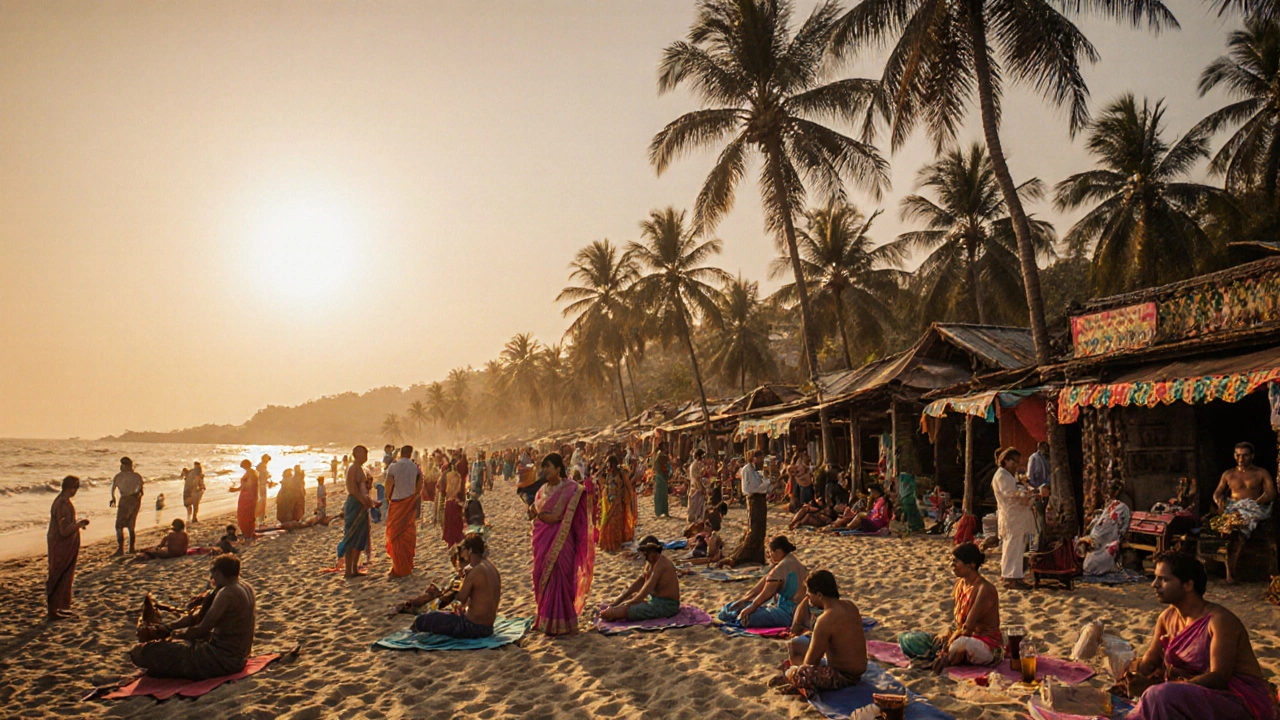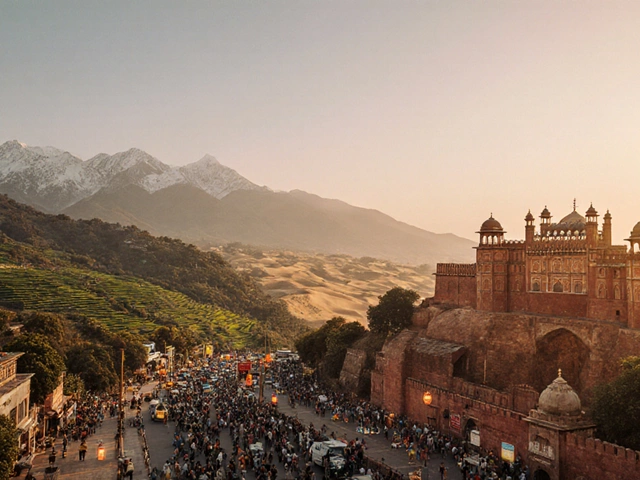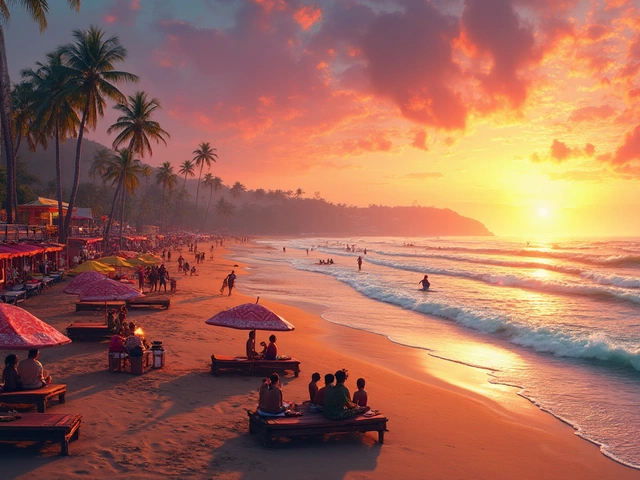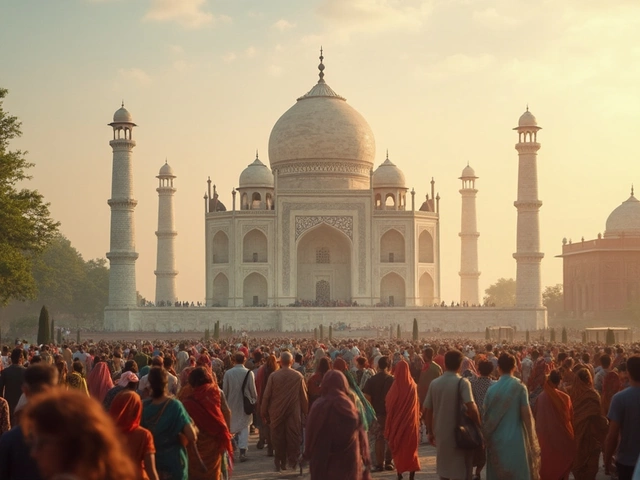South India Travel Preferences Calculator
Your Best Match
Every year, over 10 million foreigners visit India. But not all of them go to the Taj Mahal. If you want to know where the biggest crowd of international travelers actually hangs out, you don’t need to head to Delhi or Agra. The real hotspot? South India.
Goa: The Beaches That Draw the World
Goa isn’t just a state-it’s a phenomenon. Every winter, from November to March, the beaches of Palolem, Anjuna, and Vagator turn into a global lounge. You’ll hear English, German, Russian, Israeli, and French spoken more often than Konkani or Marathi. Over 1.2 million foreign tourists visited Goa in 2024, according to the state’s tourism department. That’s more than double the number that went to Rajasthan’s Jaipur that same year.
Why? It’s not just the sun. It’s the vibe. Long-stay visas for digital nomads, affordable beach shacks with Wi-Fi, yoga retreats run by Europeans, and cheap craft beer at beach bars make Goa a second home for thousands. Backpackers come for the parties. Retirees come for the slow life. Families come for the safety and clean beaches. And they stay-some for months, even years.
Kerala: Where the World Comes to Heal
If Goa is the party, Kerala is the spa. This coastal state pulls in over 800,000 foreign visitors annually, mostly from Europe, the U.S., and Australia. They come for Ayurveda. Not just a massage-they come for full detox programs, traditional Panchakarma treatments, and herbal diets guided by doctors trained in ancient texts.
Places like Alleppey and Kumarakom are packed with luxury Ayurvedic resorts that charge $150-$400 a night. But even budget travelers find affordable options in Kovalam or Thiruvananthapuram. The British, Germans, and Scandinavians especially love Kerala. Why? Because they’ve seen the results. One 2023 study from the Kerala Ayurveda Association found that 78% of foreign guests reported major improvements in chronic pain, stress, or sleep after a 14-day program.
And it’s not just medicine. The backwaters of Kerala are one of the few places in India where foreigners can live on a houseboat for weeks, eating local food, watching fishermen cast nets at dawn, and feeling like they’ve slipped into another world.
Tamil Nadu: Temples That Attract the Curious
While North India gets the hype for its Mughal forts, South India’s temples are where history feels alive. Tamil Nadu’s Meenakshi Temple in Madurai and the Brihadeeswarar Temple in Thanjavur draw foreign scholars, photographers, and spiritual seekers in huge numbers. In 2024, over 600,000 foreigners visited these two sites alone.
What sets Tamil Nadu apart? The rituals. Foreigners don’t just walk through. They sit for hours watching priests chant in Sanskrit, offer flowers to deities, and participate in daily aarti ceremonies. Many come from countries with no living temple traditions-so seeing 1,000-year-old rituals still practiced exactly as they were is mind-blowing.
Foreigners also come for the music. Madras (Chennai) hosts the world’s largest classical music festival every December. Over 10,000 international visitors attend, many flying in just for the Carnatic concerts. You’ll find French students learning the veena, Japanese drummers studying mridangam, and Americans recording traditional songs for university theses.
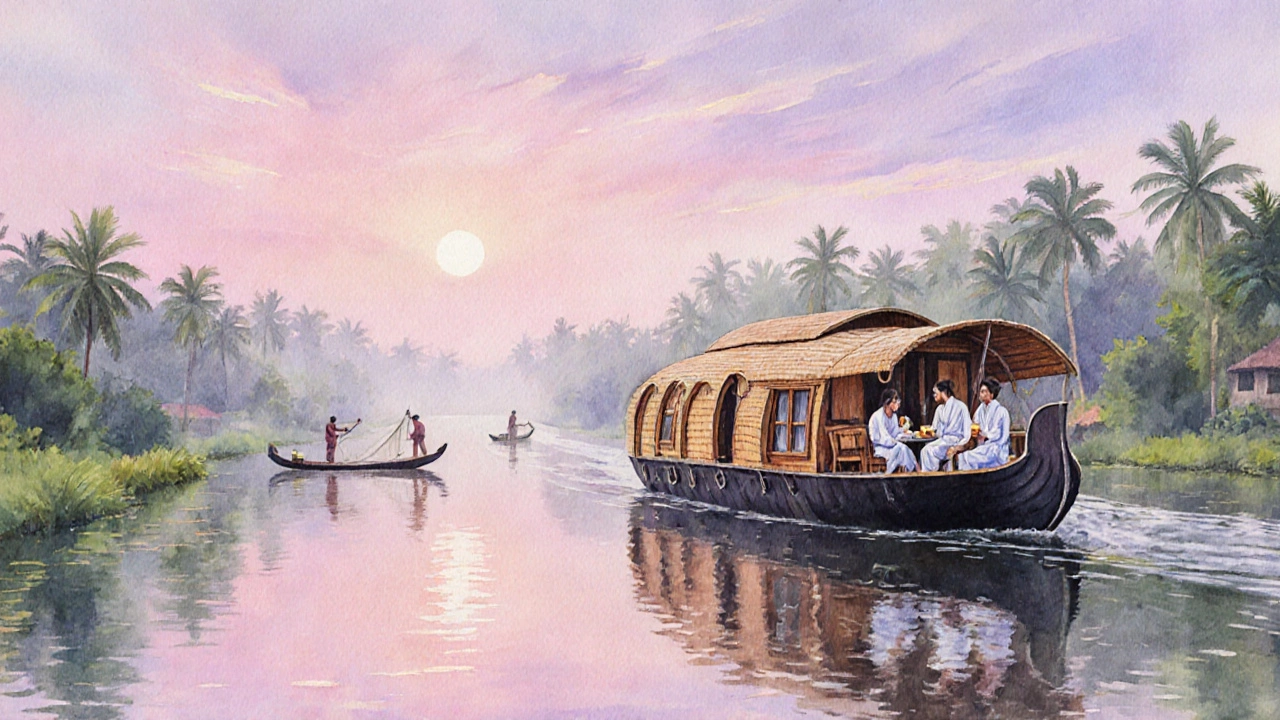
Karnataka: The Quiet Alternative
Not everyone wants the crowds of Goa or the intensity of Kerala’s Ayurveda. That’s where Karnataka steps in. Mysore’s palaces, Hampi’s ancient ruins, and the coffee plantations of Coorg pull in a different kind of traveler-quiet, thoughtful, and often older.
Foreigners here aren’t partying. They’re hiking through misty hills, reading in colonial bungalows, or learning how coffee is grown and roasted by families who’ve been doing it for six generations. Over 450,000 foreigners visited Karnataka in 2024. Many come from Canada, the Netherlands, and Japan-countries with strong cultural appreciation for heritage and sustainability.
And unlike Goa, there’s no beach noise. Just silence, stone temples half-buried in jungle, and the smell of wet earth after monsoon rain.
Why South India? Not Just the Weather
People assume foreigners flock to India because of cheap prices. That’s true-but not the whole story. In North India, you’ll find more Indian tourists than foreigners. In South India, it’s the opposite. Why?
- Language: English is widely spoken in cities like Kochi, Bengaluru, and Chennai. In contrast, Hindi dominates the north, and many foreigners don’t speak it.
- Infrastructure: South India has better roads, cleaner public toilets, and more reliable electricity. Foreigners notice.
- Food: South Indian meals-dosas, idlis, sambar, coconut-based curries-are lighter, spicier, and more familiar to Western palates than heavy North Indian gravies.
- Safety: Women travelers report feeling safer in South India. Harassment rates are lower, and local communities are more accustomed to foreign visitors.
- Long-term stays: Many South Indian states offer 6-month tourist visas with easy extensions. North India rarely does.
There’s also a cultural openness. In Kerala, you’ll see Hindu families inviting foreigners to join their temple festivals. In Tamil Nadu, temple priests explain rituals in English without hesitation. In Goa, Portuguese colonial history means many locals still speak basic Portuguese and are used to European tourists.
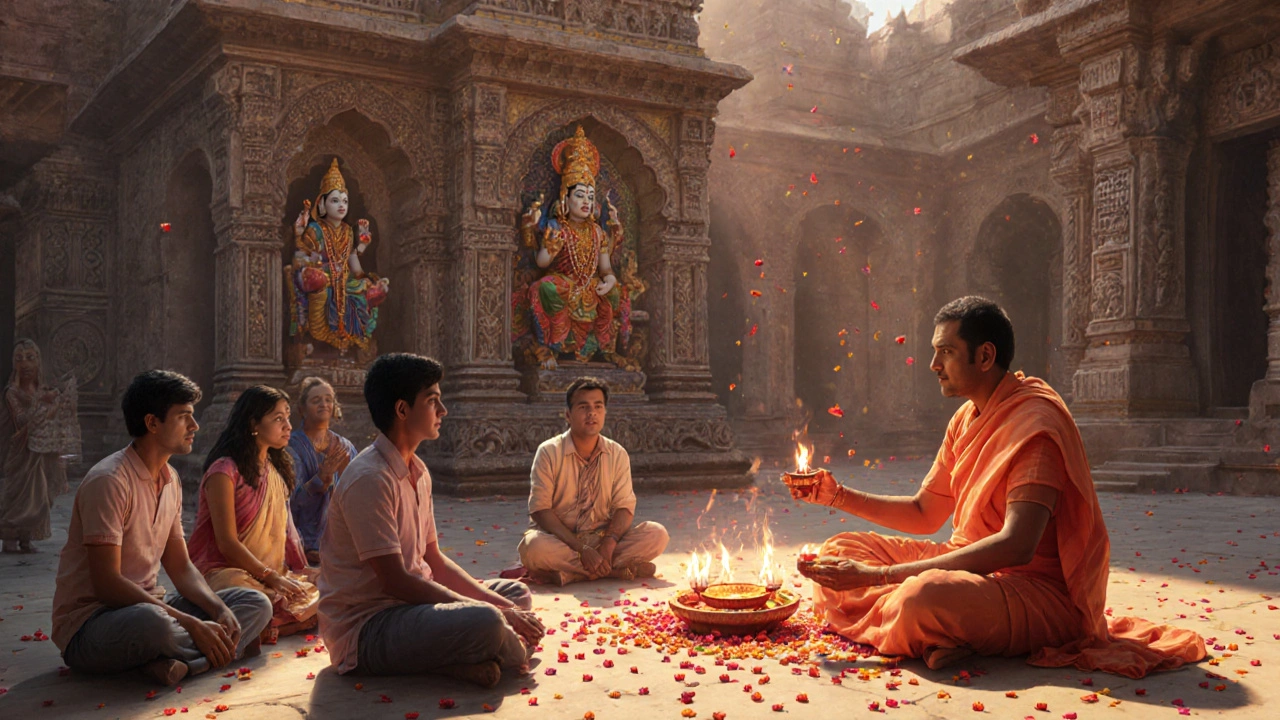
Who’s Really Coming?
It’s not just backpackers anymore. The foreign crowd in South India is changing.
- Europeans: Mostly from Germany, France, and the UK. They come for wellness, slow travel, and cultural depth.
- Americans: Often digital nomads or retirees. They settle in Goa, Pondicherry, or Coonoor for months.
- Australians and New Zealanders: Drawn to yoga retreats and eco-lodges. Many stay through the northern winter.
- Israelis: One of the fastest-growing groups. They come for affordable, safe, and spiritual experiences after mandatory military service.
- East Asians: Japanese and South Koreans are increasingly visiting for Ayurveda and temple tourism. They often travel in small, organized groups.
And here’s something surprising: more foreigners are staying after their visas expire. Some marry locals. Others start small businesses-yoga studios, organic cafes, or tour companies. In Pondicherry, nearly 1 in 10 foreign residents now runs a business. It’s not just tourism anymore. It’s migration.
What About the Other States?
North India still gets the headlines. But the numbers don’t lie. In 2024, Rajasthan had 950,000 foreign visitors. Uttar Pradesh had 720,000. Meanwhile, South India as a whole pulled in over 3.1 million.
Even within South India, the breakdown is clear:
| State | Foreign Visitors | Primary Appeal |
|---|---|---|
| Goa | 1,240,000 | Beaches, nightlife, digital nomad scene |
| Kerala | 820,000 | Ayurveda, backwaters, wellness tourism |
| Tamil Nadu | 780,000 | Temples, music, heritage |
| Karnataka | 450,000 | Heritage sites, coffee, quiet travel |
| Andhra Pradesh | 190,000 | Beaches, temples, budget travel |
| Telangana | 130,000 | Hyderabad’s food, IT hubs |
South India doesn’t just have the most foreigners-it has the most diverse foreign crowd. And they’re not just passing through. They’re settling in, learning the language, and becoming part of the local fabric.
Is South India the Best Place for You?
If you’re looking for:
- Relaxation? Go to Kerala.
- Parties and sun? Head to Goa.
- History and spirituality? Tamil Nadu won’t disappoint.
- Quiet beauty and culture? Karnataka is your pick.
There’s no single answer to “Which part of India has the most foreigners?” because the answer depends on what you’re looking for. But if you want to see the real face of global travel in India, you don’t need to fly to Delhi. You just need to head south.
Is South India safe for solo female travelers?
Yes, South India is widely considered one of the safest regions in India for solo female travelers. Cities like Kochi, Mysore, and Pondicherry have low rates of harassment. Locals are used to foreign visitors, and women often travel alone without issues. Dress modestly, avoid isolated areas at night, and trust your instincts-just like anywhere else. Many female travelers say they felt safer here than in parts of Europe.
Do I need a visa to stay long-term in South India?
Foreigners can get a 6-month tourist visa for India, which can be extended by another 6 months in most South Indian states. You’ll need proof of funds, a return ticket, and sometimes a letter explaining your purpose. Many digital nomads and retirees use this to stay for a full year. Some states, like Kerala and Goa, have special programs for long-term wellness travelers.
Can I work remotely in South India on a tourist visa?
Technically, no. A tourist visa doesn’t allow you to earn income from an Indian source. But thousands of digital nomads do it anyway-working for companies outside India. As long as you’re not hiring locals or opening a business, enforcement is rare. Many co-working spaces in Goa and Bengaluru openly welcome remote workers. Just don’t advertise your business as Indian-based.
What’s the best time to visit South India to avoid crowds?
April to June is the least crowded, but it’s hot and humid. For a balance of good weather and fewer tourists, aim for late September to October, right after the monsoon. The beaches are quieter, Ayurvedic centers have openings, and temples aren’t packed. Avoid December-February if you hate crowds-this is peak season.
Are there any hidden spots in South India that foreigners rarely visit?
Yes. The fishing villages of Kanyakumari’s coast, the spice plantations of Wayanad’s hills, and the abandoned Portuguese churches in Chetlat (Lakshadweep) are almost empty of tourists. In Tamil Nadu, the temple town of Kumbakonam has more local life than foreign crowds. These places offer authentic experiences without the price tags or selfie sticks.
